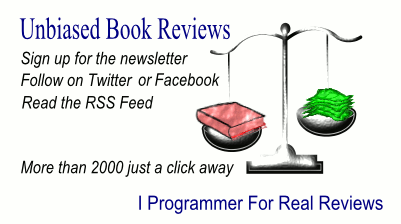| SQL in Easy Steps, 3rd Ed |
Author: Mike McGrath Is this book ‘for web developers, programmers & students’ as claimed on its cover Like other ‘easy steps’ books, this is a short book that makes use of bright colours, short chapters, and lots of step-by-step instructions with the aim of providing a simple, straightforward introduction to the topic in question. The topic in this case is SQL, or more specifically, MySQL. Mike McGrath has a good clear writing style, but he faces the problem that databases and SQL aren’t topics that are particularly simple or straightforward. The book starts of with a gallop through the development of relational databases and SQL; poor old E.F. Codd gets renamed to Todd, not a good augur for things to come, and a bit poor in a third edition of the title. McGrath then goes through installing MySQL on Windows and Linux, installing an ODBC driver, and using the Microsoft Query tool. A lot of this first chapter felt like a waste of space in what’s already a very slim volume; being honest, if you need to read the rest of the book, you probably don’t need to know about how relational databases were invented. The next chapter covers creating and deleting a database, and running SQL scripts. Tables are tackled next, with descriptions of data types and primary keys. There are chapters on inserting data into tables and retrieving data from tables. Next comes a chapter on storing retrieved data - essentially using the clause ORDER BY, followed by chapters on WHERE and AND clauses. Calculated fields get a chapter, then we’re on to SQL functions - a step too far for most of the potential readers of the book, I’d suggest. McGrath covers GROUP BY and HAVING in the next chapter, then gets on to sub-queries. The final chapter gives an outline of joins. The subtitle of this book is ‘for web developers, programmers and students’, which is very ambitious in its potential audience. I’d describe it as being useful to beginners who just want some idea of how to write a query and interact with MySQL on Windows, but who don’t particularly want to have to get to grips anything more detailed in terms of database theory. There are are very simplified ‘skim the surface’ definitions of concepts such as database joins, and no real coverage of any of the ‘whys’ behind the things you do with a database. However, you could probably write a SQL query for a MySQL table by following the instructions in the book, and that may well be all you want to learn.
|
|||
| Last Updated ( Thursday, 21 June 2012 ) |

